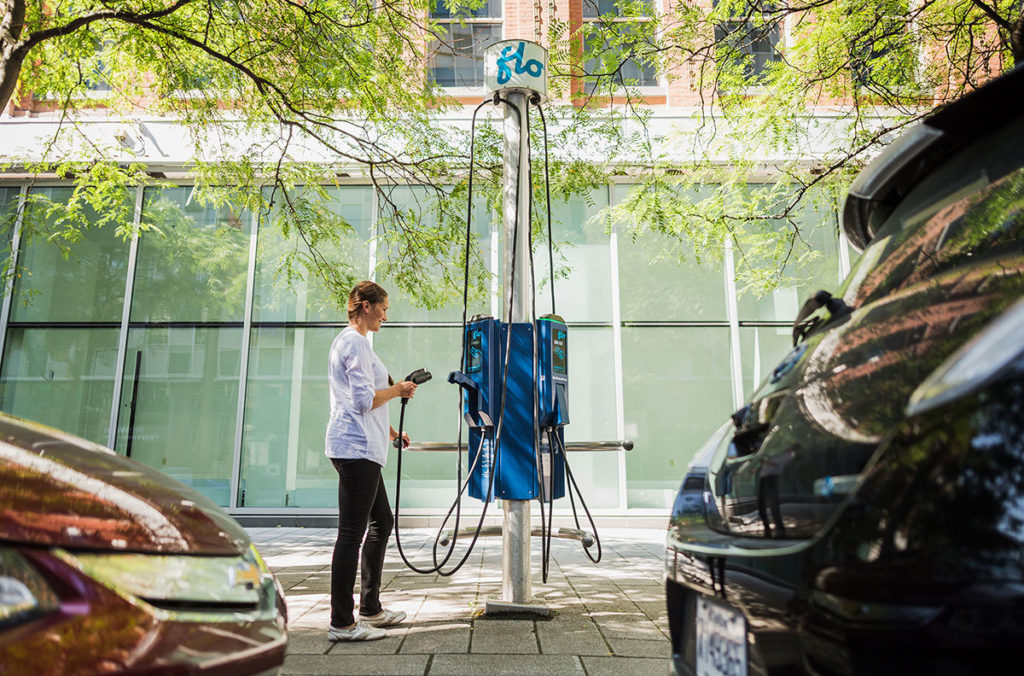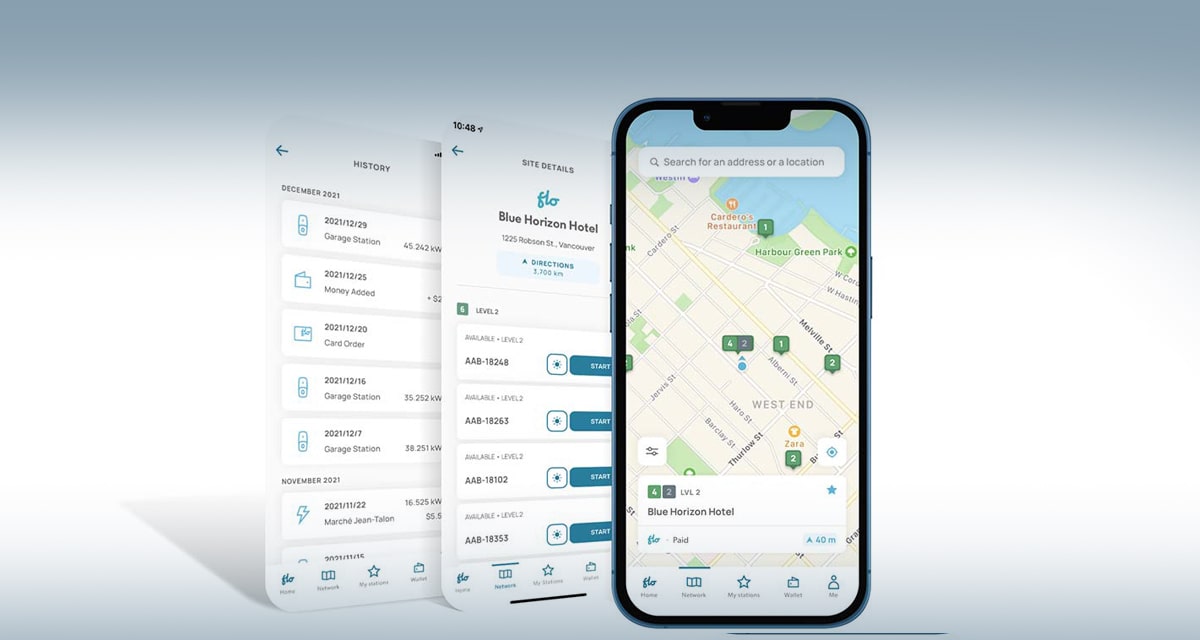Mobile Apps for EV-Charging Networks

In this article
Electric vehicles are becoming more popular by the day, as people become more environmentally conscious and seek to reduce their carbon footprint. But one of the main barriers to widespread electric vehicle adoption is the lack of charging infrastructure.
This is where mobile apps come in. Mobile apps can help with everything from finding charging stations to paying for charging sessions. They make it easier and faster for drivers to find and use charging stations, and they help manage the billing process so drivers can pay quickly and easily.
In this article, we’ll take a look at some of the key functions of mobile apps for EV-charging networks, as well as some case studies of how they’ve been used successfully. We’ll also explore some of the challenges faced while developing these apps, and look ahead to what the future holds for mobile app-based EV charging.
1. How Custom Mobile Apps can Benefit EV-Charging Networks
Mobile apps offer a number of advantages for EV-charging networks. For one, they make it easier and faster for drivers to find charging stations. Mobile apps can include up-to-date maps of charging stations, as well as information on station availability and real-time updates on charging status. This helps drivers locate the nearest available charging station and ensures that they don’t waste time waiting for a charging session to start.
Mobile apps can also help manage the billing process. They can allow drivers to pay for charging sessions quickly and easily, without having to fumble through their wallets or purses for change. Mobile apps can also keep track of charging history and data, so drivers can keep track of their electric vehicle’s performance over time.
Finally, mobile apps can help promote electric vehicle adoption by providing users with information on electric vehicle incentives and rebates. They can also connect drivers with local electric vehicle owner communities, providing a support network for those just starting out with electric vehicles.
2. Functions of Mobile Apps that help with EV Charging Networks
Mobile apps play an important role in managing EV-charging networks. In addition to helping drivers find and pay for charging sessions, they can also:
- Keep track of charging history and data
- Connect drivers with local EV owner communities
- Provide information on electric vehicle incentives and rebates
- Promote electric vehicle adoption
3. Why Mobile Apps are a Must for EV Charging Stations at Home
Mobile apps are also a must-have for home EV-charging stations. They can help owners of at-home charging stations manage the installation and set-up process of their stations. Once installed, they can use the app to manage their stations, set up software updates, manage problems, and get real-time information about the charging of their vehicle.
4. Case Studies of Mobile App use in Electric Vehicle Charging Networks – FLO-Addenergy
Mobile apps are being used successfully in electric vehicle charging networks around the world. One such example is the FLO app, which is used by the Canadian EV-Charging leader Addenergy, both for the users of its charging network, and for customers that have bought their home charging stations manufactured by the company.
The FLO app is available for both iOS and Android devices, and it offers several features that are useful for EV drivers. These include the ability to find nearby charging stations, start and stop charging sessions, receive real-time updates on charging status, pay for charging sessions, and view charging history. The app also provides Addenergy customers with the ability to remotely monitor and manage their home charging stations.
Signing Up as a Client
Before there was an app, the process of signing up for and using EV-charging networks was much more complex. Drivers had to go online and sign up for membership, wait to receive a member card in the mail, and then finally be able to start using the charging network. This process could often be slow and cumbersome, and it was difficult for drivers to keep track of their charging sessions and billing history.
Now with the Mobile App:
– You can sign up for an account quickly and easily
– No need to wait for a membership card – you can start using the app right away
– Access to all the features of the EV-Charging network, including finding nearby charging stations, paying for charging sessions, and viewing charging
Physical Cards vs Digital Cards
Before the app, clients needed to have a physical card to activate the charging stations on the network. The mobile app allows drivers to have a digital membership card. This means that there is no need to carry around a physical card, and it is easy to keep track of how much credit you have on your card. The app also sends real-time updates on charging status, so drivers can keep track of how much money they are spending on charging their vehicle.
Updating Mobile Software vs Sending New Cards
One advantage of having a mobile app is that updates can be made quickly and easily, without the need for drivers to receive and install a new card. This is much more efficient than the process of sending out new cards to all members of the network. With a mobile app, drivers can get all the benefits of the charging network, including real-time updates on charging status, without having to wait for a new card to arrive in the mail.
Communication with Clients
Before the app, FLO had only non-direct, non-push ways of communicating with its clients. Mobile apps and push notifications are a great way to communicate with clients. They provide a direct, instantaneous way of communicating with drivers, and they ensure that drivers are always up-to-date on the latest charging information. This is important, as it helps drivers plan their trips and charging sessions accordingly. Mobile apps also allow networks to send promotional messages to drivers, helping increase client lifetime value (CLV).
Easier to Test the System for the Manufacturer and Company Behind the EV-Charging Network
The mobile app makes it much easier for the manufacturer and company behind the EV-charging network to test the system. With a mobile app, they can easily send technicians or users to test the various charging stations, compared to before when they needed a client card, a laptop, and a mobile wifi connection. This makes it faster and easier for them to test and improve the system, which is important for a network that extends all across Canada.
Providing the Manufacturer and EV-Charging Network with Usage Data
The Mobile App is generating tons of usage data for the company that can help make strategic decisions about the EV-charging network. For example, the company can use this data to decide which areas need more or fewer charging stations, and they can use it to improve the user experience of the network.
5. Challenges Faced while Developing Mobile App Solutions for EV Charging Networks
Mobile app development for EV-charging networks can be challenging. One of the biggest challenges is ensuring that the apps can scale as the number of electric vehicles and charging stations grows. This requires significant investment in infrastructure and back-end support, as well as ongoing maintenance and updates. Another challenge is designing user-friendly apps that are easy for drivers to use, even when they are in a hurry. This requires careful user-testing and feedback loops to ensure that the app meets the needs of users.
Software development teams often need to collaborate to create a successful mobile app. In the case of EV-charging networks, the manufacturer of the EV-charging stations needs to work with the company that created the back-end cloud infrastructure and the mobile app itself. This can be a difficult process, as it requires significant investment in time and resources. However, if done correctly, it can lead to a successful and user-friendly mobile app. This also requires agile, transparent, and collaborative software developers that can work as a team.
6. The Future of Mobile Apps and Electric Vehicle Charging Networks
Mobile apps are likely to play an even more important role in electric vehicle charging networks in the future. As the number of electric vehicles grows, so too will the need for apps that can help drivers find and pay for charging sessions. Mobile apps will also become increasingly important for managing billing and payments, as well as keeping track of electric vehicle usage data. In addition, mobile apps can help to promote electric vehicle adoption by providing users with information on electric vehicle incentives and rebates, as well as connecting them with local electric vehicle owner communities.
7. Conclusion
Mobile apps are essential for both drivers and owners of electric vehicles. They offer several benefits that make charging sessions more convenient and efficient. Mobile apps also play an important role in managing electric vehicle charging networks and will become even more important as the number of electric vehicles grows.
If you are a manufacturer or charging network looking for a mobile app development partner, please contact Sidekick Interactive. We have extensive experience in developing mobile apps for electric vehicle charging networks, and we can help you create an app that is both user-friendly and scalable.


